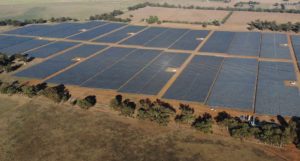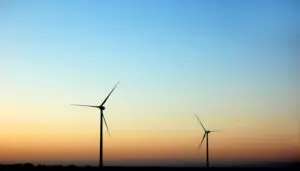Wind and solar power, alone, can meet more than 80 per cent of demand in many countries around the world without “crazy amounts” of storage or excess generating capacity, a new report has found.
The study led by researchers at the University of California, Irvine, and published recently in Nature Communications argues that most of the current electricity demand in advanced, industrialised nations can be met by some combination of wind and solar power.
The report’s authors, including from China’s Tsinghua University, the Carnegie Institution for Science and Caltech, don’t deny the crucial need for a range of storage and other grid balancing technologies.
But they do stress that “reliable renewable” energy based systems can do an enormous amount of the heavy lifting needed to replace outgoing fossil fuel-based generation technologies as the world commits to a rapid shift to net-zero emissions power supplies.
The team analysed 39 years worth of hourly energy demand data from 42 major countries and found that a full conversion to sustainable power resources could be easier for larger, lower-latitude countries, which could rely on solar power availability throughout the year. Australia comes to mind.
Smaller countries, however, at higher latitude would find it more challenging to meet their electricity needs with wind and solar resources – and the study pointed to Germany as an example of this, including its recent experience of the wind “doldrums,” when other power sources had to be brought into the mix.
On average, however, the study found that electricity grids dominated by wind power were capable of meeting electricity requirements in the countries studied 72 to 91 per cent of the time, even without energy storage.
And with the addition of 12 hours of energy storage capacity, systems became dominated by solar power, the study found, and could satisfy demand for between 83 to 94 percent of the time.
“Wind and solar could meet more than 80 percent of demand in many places without crazy amounts of storage or excess generating capacity, which is the critical point,” said co-author Steve Davis, UCI professor of Earth system science.
“But depending on the country, there may be many multi-day periods throughout the year when some demand will need to be met by energy storage and other non-fossil energy sources in a zero-carbon future.”
For those times Barnaby Joyce tends to fixate upon – when wind don’t blow and the sun don’t shine – the researchers recommend building up generating capacity that exceeds annual demand, developing long-term storage capabilities and pooling resources of multiple nations, or states, where possilble.
“Europe provides a good example,” said lead author Dan Tong, assistant professor of Earth system science at Tsinghua University.
“A lot of consistency and reliability could be provided by a system that includes solar resources from Spain, Italy and Greece with bountiful wind available in the Netherlands, Denmark and the Baltic region.”
The researchers found that a wind and solar power system could provide about 85 percent of the total electricity demand of the United States, and that amount could also be increased through capacity overbuilding, addition of batteries and other storage methods, and connecting with other national partners on the North American continent.
“Around the world, there are some definite geophysical constraints on our ability to produce net-zero carbon electricity,” said Davis.
“It comes down to the difference between the difficult and the impossible. It will be hard to completely eliminate fossil fuels from our power generation mix, but we can achieve that goal when technologies, economics and socio-political will are aligned.”










